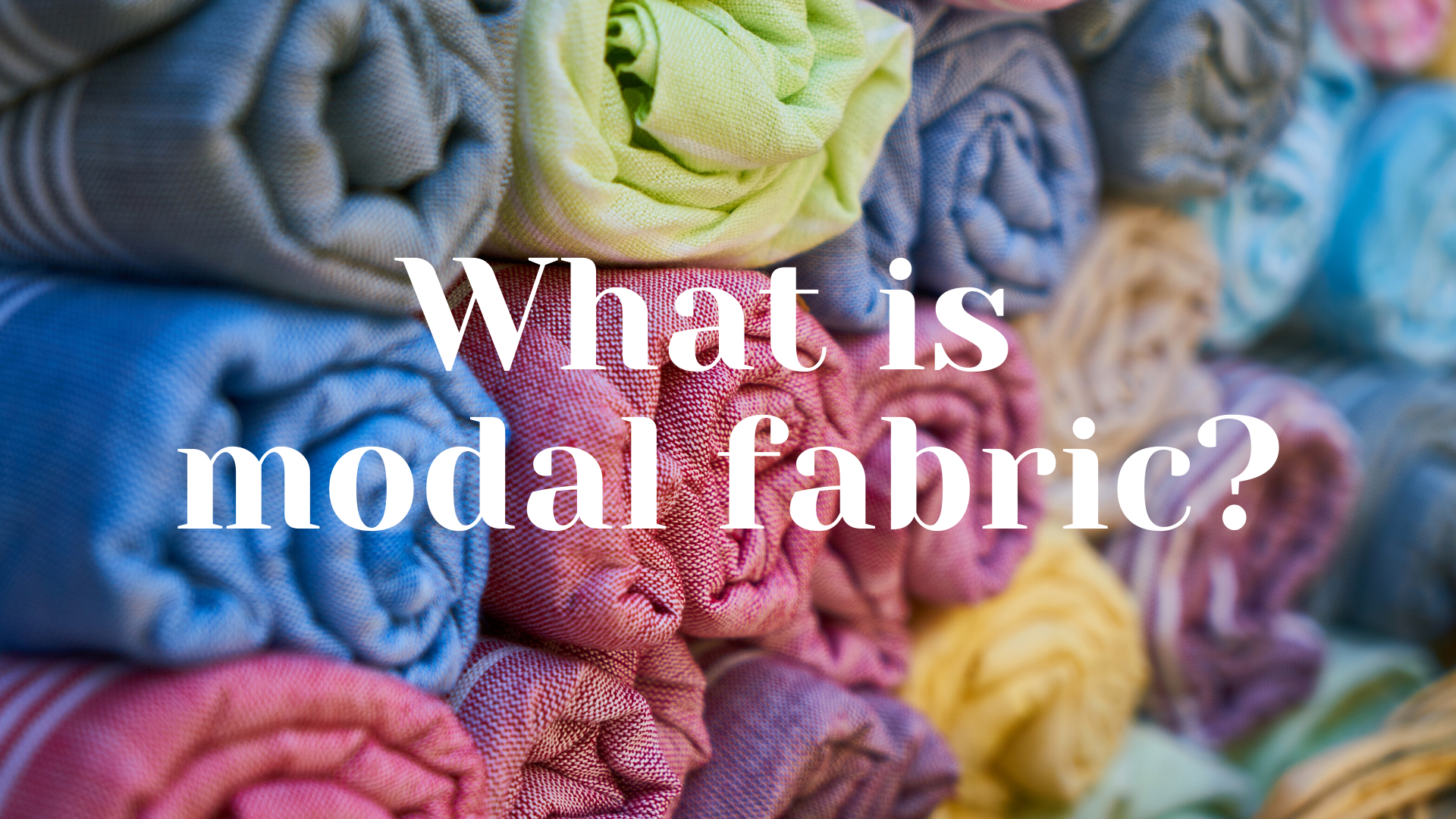
Modal fabric is a popular fabric used in clothing and everyday household items. Modal is a semi-synthetic cellulose fiber, which is a type of rayon. Modal fabric is made by spinning cellulose that has been reconstituted from trees. More often than not the cellulose is obtained from beech trees.
Sometimes this fabric is used on its own and, other times, it is combined with other fibers, such as spandex and cotton.
Here is the list of pieces of clothing and household items that modal is most commonly used for:
- Underwear.
- Pajamas.
- Towels.
- Bathrobes.
- Bedsheets.
The Modal Fabric Story
But what is really modal and why is it quite so popular?
This fiber has been used for quite some time now. It was developed in 1951 in Japan. Today, most of the modal that is used is produced by a company from Austria known as Lenzig AG. They commercialized modal under the trademark Lenzing Modal©.
Even though modal has been around for so many decades, it is now more popular than ever. And the reason for this is that its stretchiness and its softness make it ideal for fashionable active and sportswear. So, now more modal is produced than ever before.
The Austrian company has been commercializing for many decades.
There are, indeed, many advantages to using modal as a fabric. For one thing, this type of fabric is breathable and about fifty percent more absorbent to water than cotton, which makes it ideal for activewear. But it is also almost a smooth as silk.
I find that even the simplest of dresses, if it has the correct seaming and the correct fabric, whatever shape or size you are, it can change the way you hold yourself. – Victoria Beckham
Like all other cellulose fibers, modal is designed both to stay color-fast and absorb dye when you wash it in warm water.
These characteristics are what have made modal so popular among the manufacturers of active and sportswear.
Another reason why this fabric is so popular these days is that it resists shrinkage a lot better than many of its counterparts.
Modal is made from the wood fibers taken from beech trees. The first step in this process is pulping the wood fibers and into liquid. Then, they are forced through very small holes. Once they come out through the other side, they are woven together in order to create the fabric.
What Is The Impact On The Environment Of Producing Modal?
Hearing that modal is produced from trees, you are probably wondering if there is an environmental impact in the production of this fabric. All rayon fabric, not just modal, is made with wood pulp. But modal and all the other rayon fabrics cannot be considered natural fibers simply because they are mixed with a number of chemicals during the processing process.
At least when it comes to Lenzing Modal, the Austrian company claims that they have a positive environmental footprint. According to them, their environmental footprint is carbon neutral. They claim that the carbon footprint of producing modal is less than that of cotton. For example, the production of modal requires considerably less land per ton and it consumes between ten to twenty times less water.
So, it can be said that modal fabric is environmentally friendly, too. Or, at least, that is how many different brands that use this fabric in their products see it.
How to Wash Modal Clothes?
In recent years, modal has become so popular in the United States and in other countries that it is very likely that you have several pieces of clothing or linen made of modal fabric.
There are no boundaries for what can be fabric. – Issey Miyake
The first thing that you need to check is whether the piece of clothing or linen in question is made of modal fabric one hundred percent. If they are one hundred percent modal then you should wash it exactly as you would wash cotton. Remember to always read the labels before washing any piece of clothing.
Modal fabric can normally be washed at any water temperature.
But do not never use chlorine bleach because it will discolor your fabric but also it will weaken the fibers. If you have any hard stains that you need to tackle, you need to use dilute solutions but do not do it too often or you will ruin the fabric.
The best alternative to chlorine bleach to clean stains from modal fabric would be bleach that is oxygen-based. For example, one of the following brands could work:
- Oxi Clean
- OXO Brite
- Nellie’s All-Natural Oxygen Brightener
But always follow the directions on the package and take the utmost care. In order to tackle stubborn stains, you will need to let the piece of clothing in question soak overnight or, at least, two whole hours, in a mix of water and powdered oxygen bleach.
If you use a drier, make sure that to set it on a temperature between low to medium-high. Always take out the clothes out while they are still slightly damp to stop them from getting wrinkled.
You would normally only need to iron modal fabrics that are woven (silk modal, and wool modal). Do so with the utmost care, following the instructions on the label to avoid ruining them.








